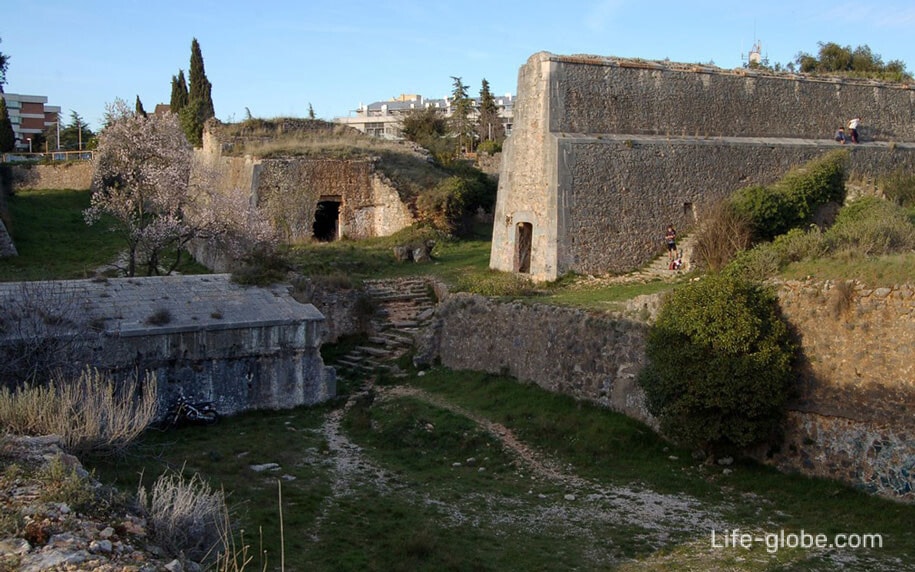
Girona is a city with a rich history, originating from the times of the Iberians.
Currently in Girona have preserved the old quarter, reflecting a long history. There are also more modern attractions.
The Onyar river (Riu Onyar) - river crossing Girona and divides the city into two parts: on the left Bank is a modern city, and part of the right Bank - historical center - old town "Barri Vell".
The most interesting and beautiful part of the river Onyar runs from Plaza Catalunya to the bridge of Sant Feliu.
Along this part of the river Onyar dense, located near the colorful houses overlooking the river, has long become a hallmark of Girona.
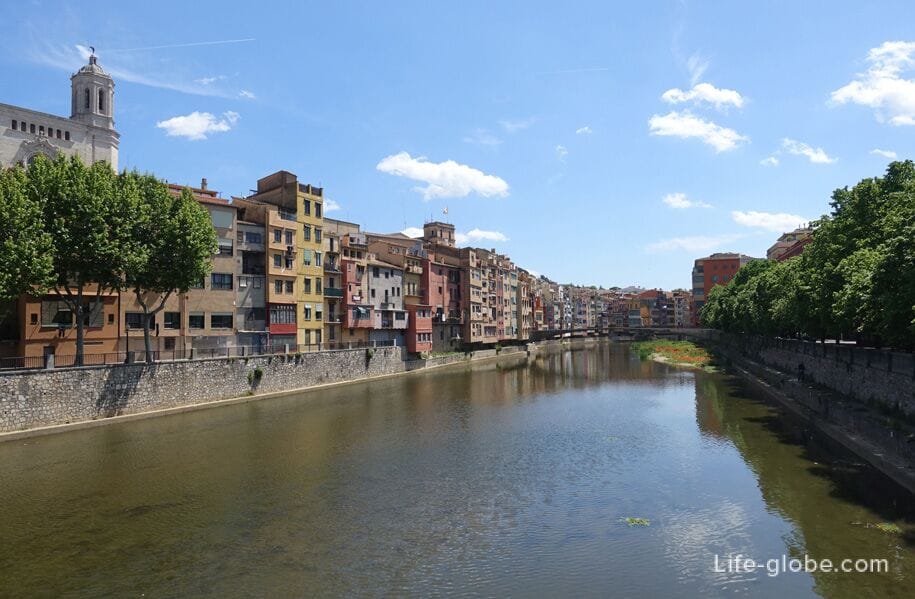
Onisr the river crosses several famous bridges connecting the old quarter with modern city: Pedra bridge, Eiffel bridge, the bridge of Gomez and the bridge of Sant Feliu.
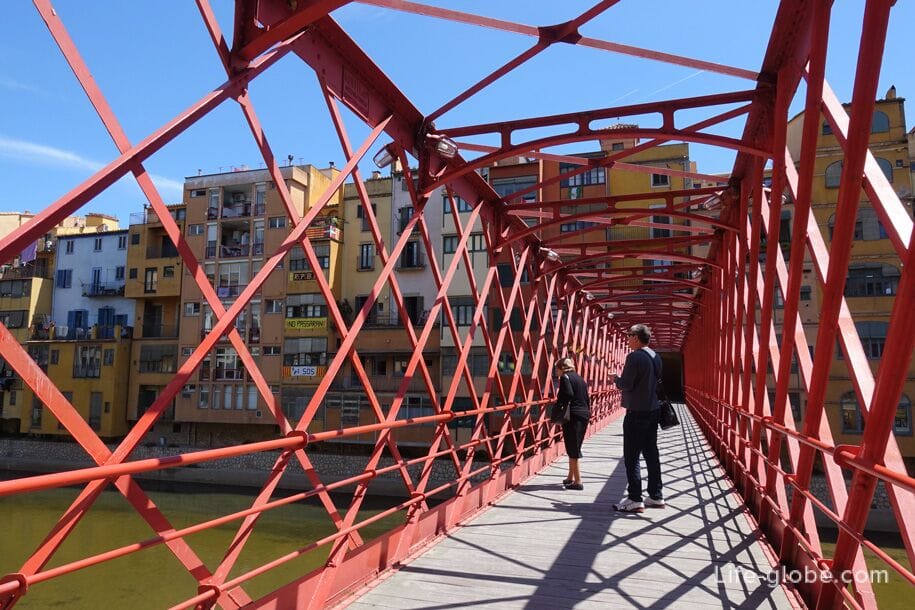
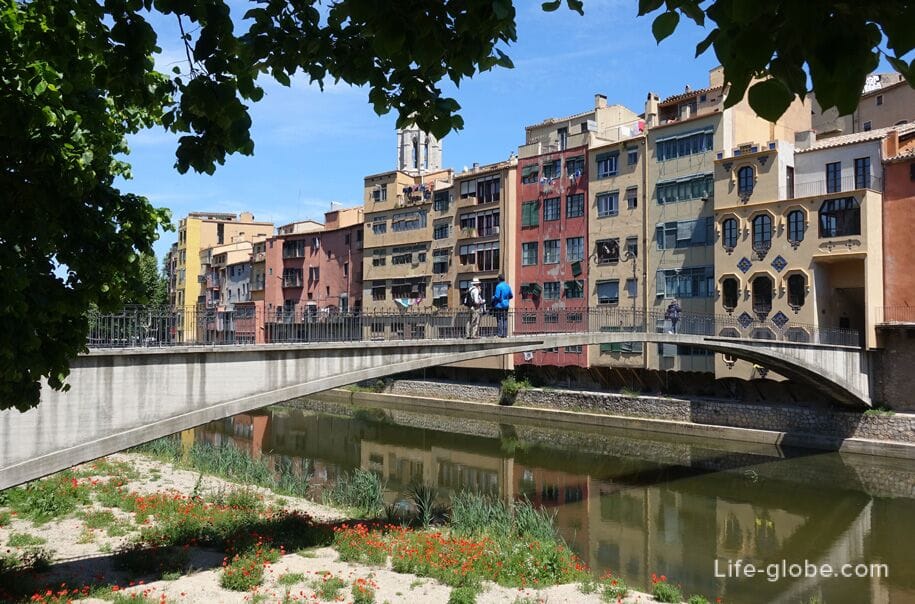
Bridge of Sant Agustí and Gomez, from the old city, is one of the famous houses in Girona - the house of Masks (Casa Maso) - the birthplace of the architect Rafael masó.
This is the only known houses on the river, open to the public. The house was saved with the furniture and furnishings of the 19th century-style Features. Read more about the houses and bridges of the river Onyar...
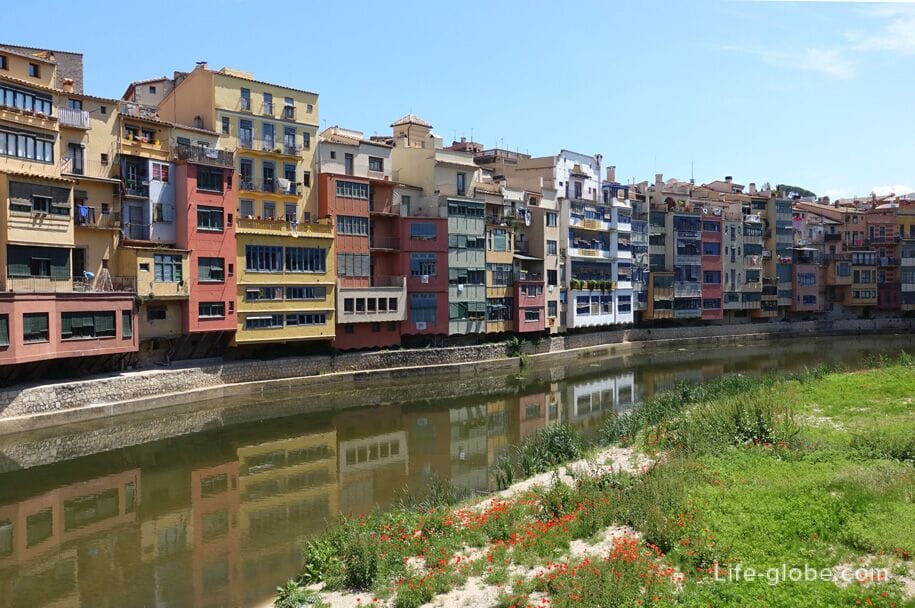
Plaza Catalunya (Placa de Catalunya) is a small area located in Central Girona and is different from other areas that represent a wide bridge over the river Onyar.
On the square: a bed of flowers and a fountain, places to stay and a monument to the Catalan writer, Prudence Bertrand.
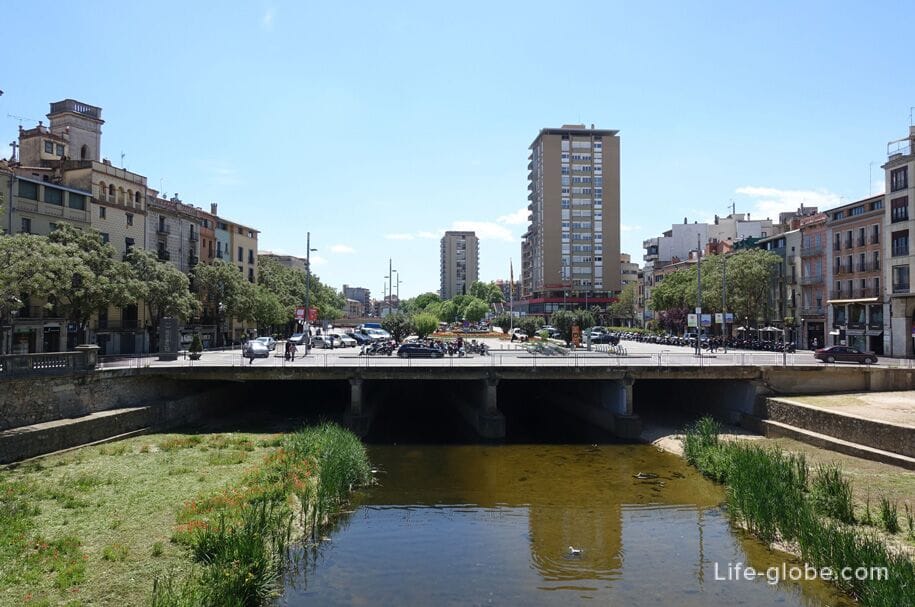

Old town Girona is a real treasure of history and architecture.
Old town Girona is called Barry vel (Barri Vell), which translated from Catalan means "the old quarter".
It is in the old quarter of Girona's main tourist flows life. Here streets and small squares, among which concentrated the bulk of the attractions in Girona, including all the most important artistic heritage of the city.
In the East of the old town is limited by river Onyar. On the South ends of the Plaza Catalunya. And the Northern, Eastern and partially southern sides, the old quarter of Girona surrounded by the former city walls with guard towers.
Currently wall of Girona is one of the main attractions of the city and is a separate tourist route. On the wall you can walk. Read more about the wall of Girona...

The main attractions of Girona's old town are:
- main street - La Rambla-is-La-Libertad (Rambla de la Llibertat), notable 19th century buildings, which appeared on the ruins of the city wall and the old market square;
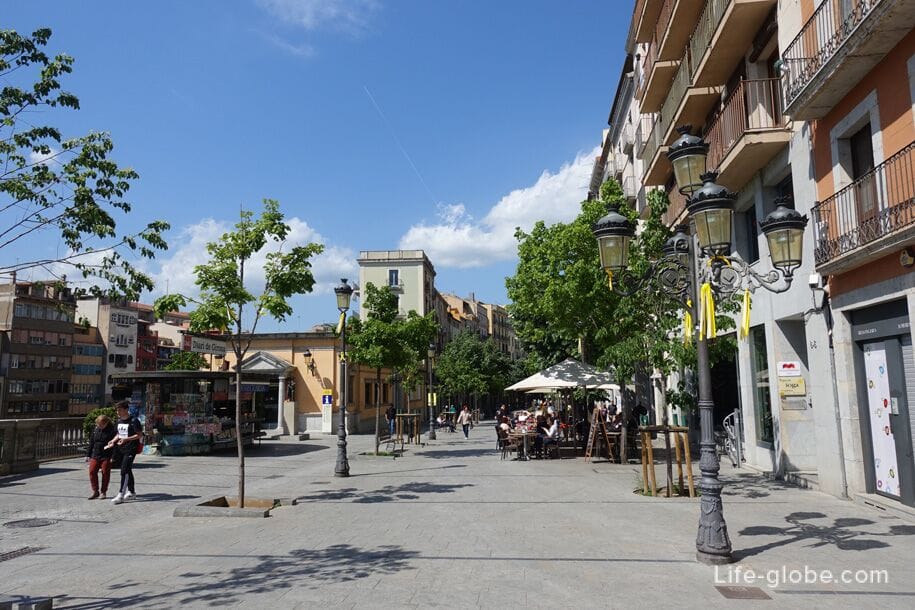
- Girona Cathedral (Catedral de Girona) or the Cathedral of Saint virgin Mary (Santa Maria / Catedral de Santa Maria) - the main Shrine and one of the most exquisite jewelry Girona.
The Cathedral was built between the 11th and 18th centuries. Includes a number of walls and spaces in different styles, mainly Gothic and Romanesque (the cloister and tower of Charlemagne) and Baroque, embodied in the facade and the wide steps leading to the main entrance to the Cathedral;
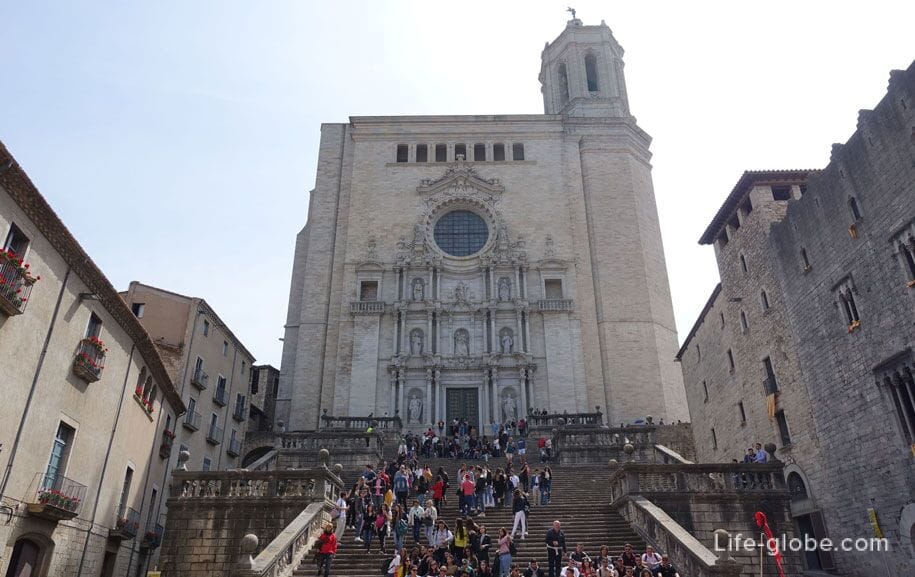
- art Museum of Girona (Museu d'art de Girona), founded in 1976 and located in the former Episcopal Palace, Girona, near the Cathedral.
In the Museum you can trace the history in chronological order through successive epochs and styles: Romanesque, Gothic, Renaissance, Baroque, realism, art Nouveau and Docetism.
The Museum also houses a monographic room dedicated to ceramics, glass and art of the Catholic Liturgy, as well as rooms for temporary exhibitions;
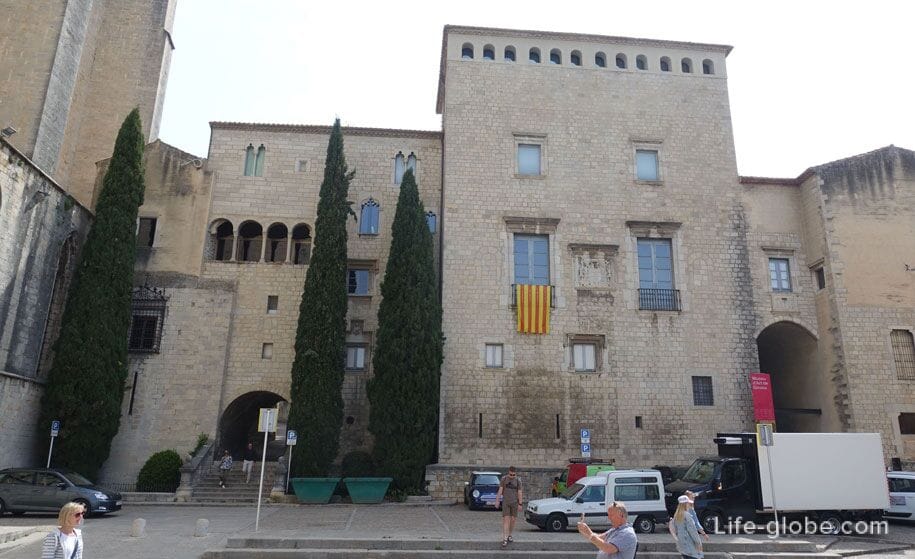
- collegiate Church of St. Felix (Basilica de Sant Feliu).
The first Church in this place was built in early Christian times. In the present building has elements of Romanesque, Gothic and Baroque styles.
Before the construction of the Cathedral it was the Church of Girona.
The architecture of the Church is notable for the high austere bell tower of the 14th to 16th centuries;
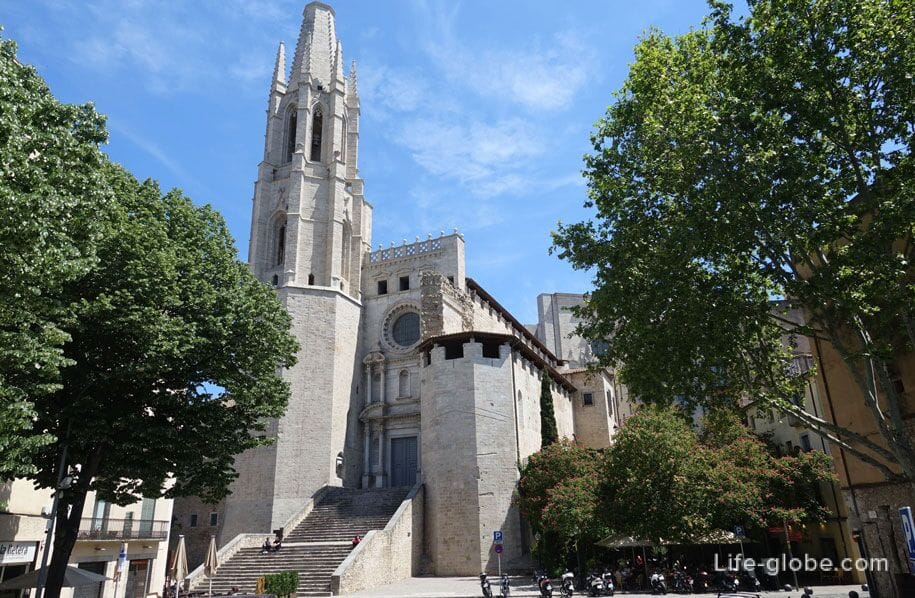
- the sculpture "Girona Lioness" (La Lleona), which are so fond of kissing ass.
Originally a Romanesque stone sculpture was found in Girona and dated to the 11th century. In the next sculpture is called "the Lioness". Currently, the original lioness is in the art Museum of Girona, whereas under the open sky for all to see located its copy;

- the Arab baths (Banos arabes), a unique building of the 12th century, built by the example of Roman baths and mimicking the structure of the Muslim baths.
The building functioned as bathrooms (baths, baths, baths) until it was closed in the 15th century. In 1618, the baths were purchased for the community of the Capuchin friars who used the space as a pantry, kitchen and Laundry. In 1929, the baths became public domain and were restored, now a Museum;
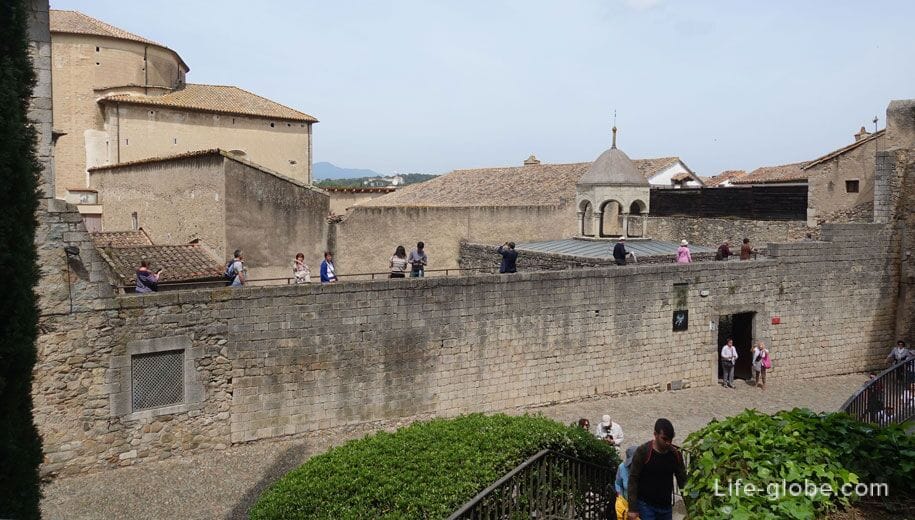
- the monastery of Sant Pere de Galligans (Monestir de Sant Pere de Galligants) and St. Nicholas ' chapel (Capella de Sant Nicolau), located in close proximity to each other, together represent a single complex and one of the most striking examples of Catalan Romanesque art.
Since 1857 the buildings houses the Archaeological Museum of Catalonia, with both permanent and temporary (changing) exhibitions;
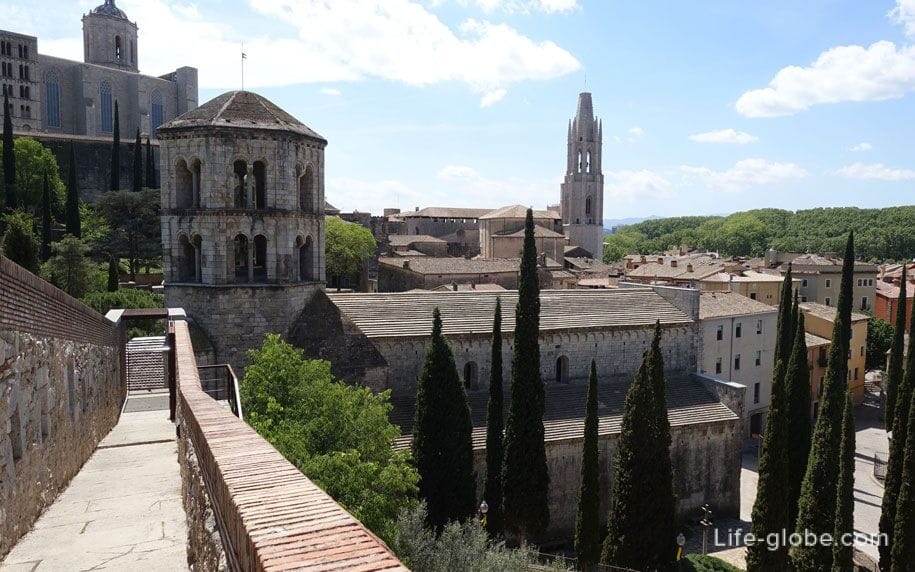
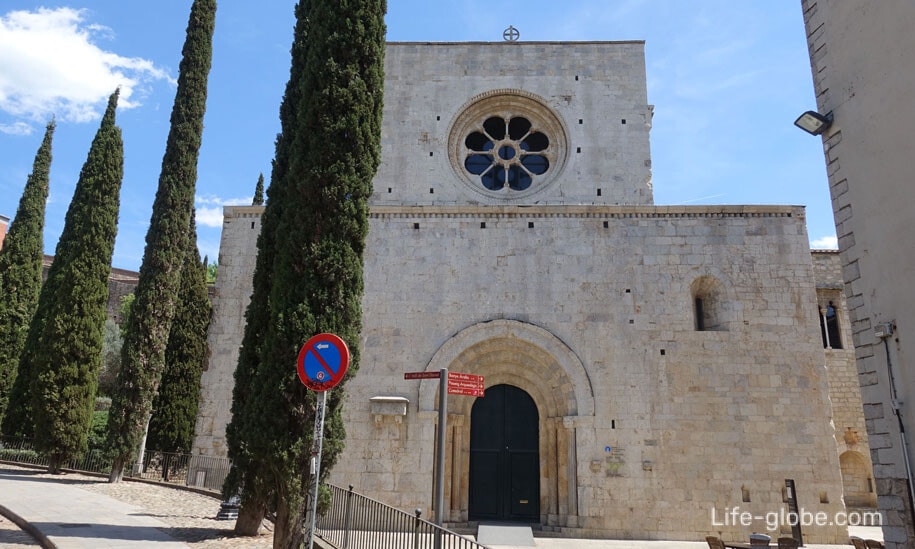
- Jewish quarter El Kal or Call (El Call jueu), some of which are remnants of the historic Jewish community of Girona, located in the city centre until their expulsion.
The quarter consists of a few narrow streets and patios that have maintained their medieval atmosphere.
In the quarter, is a Museum of Jewish history in Girona (Museu d ' Historia dels Jueus), which was previously a Synagogue;
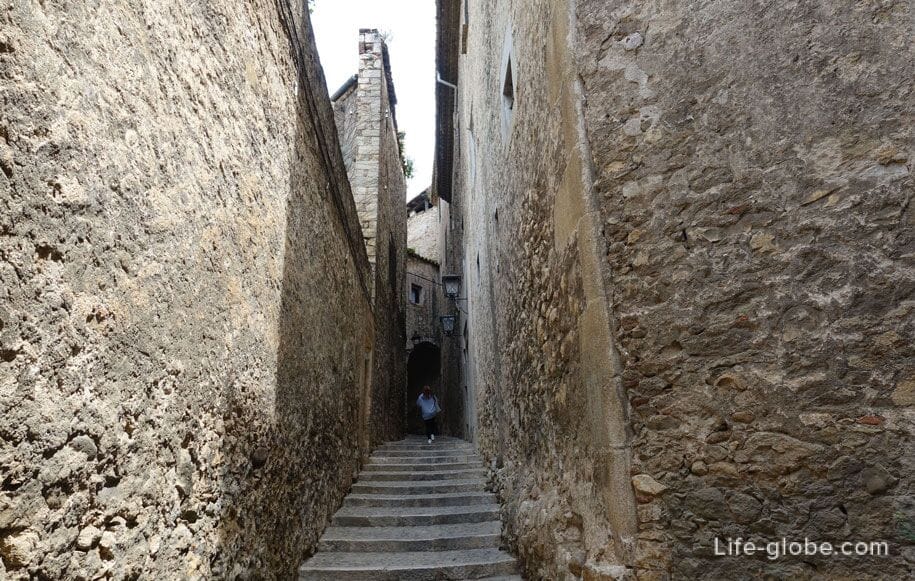
- the monastery of St. Dominica and Les Algues.
The convent of Sant domènech (Convent de Sant Domenec) was founded in 1253 and was one of the first Gothic buildings in Catalonia.
His most notable features are the Church, the house and a large cloister.
From Les Aligues (16th century) is preserved today only the facade of the building, which is a rare example of the Renaissance architecture in the city.
Monastery and Forest Algues are now the University of Girona;
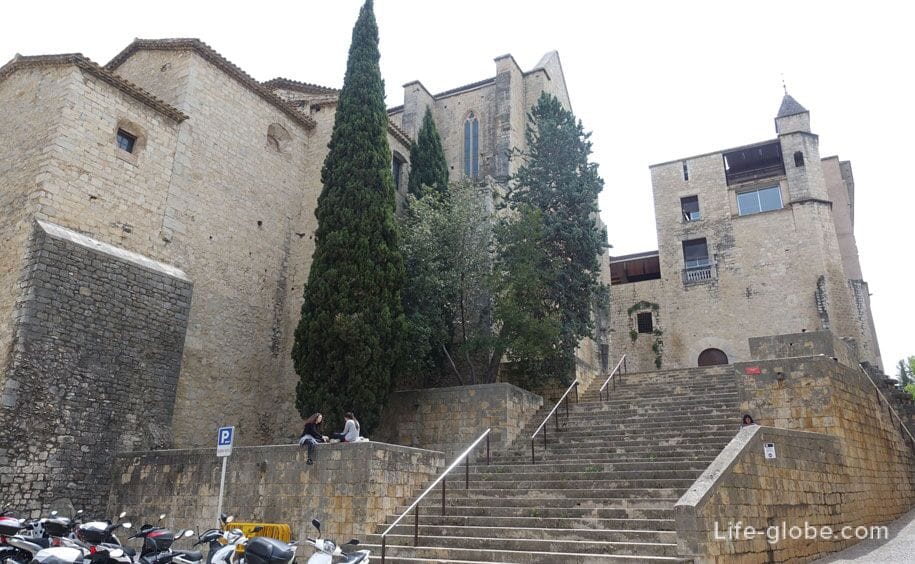
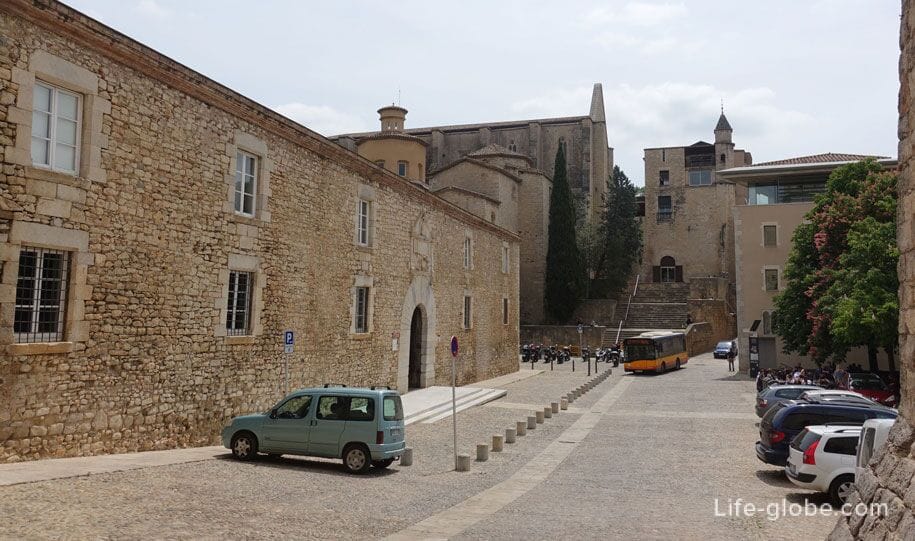
- the Church of Sant martí Sacosta (Sant Marti Sacosta) with a facade in the Baroque style, which is the basis of the surrounding space, including the stairs leading from the Church to Casa Palau of Agullana (Casa-Palau Agullana, 16th-17th century), provides one of the most unique images of the city with its covered, sloping arch;

- Church of the sacred Heart (Templo Expiatorio Del Sagrado Corazon), built in 1886 in neo-Gothic style. The Church was initially run by the Jesuits, in 1951 he transferred to the Dominicans.
The main facade of the Church has two high square tower and bell tower, giving the Shrine of monumentality and making it visible from afar; high arched entrance, over which is a large rose window;
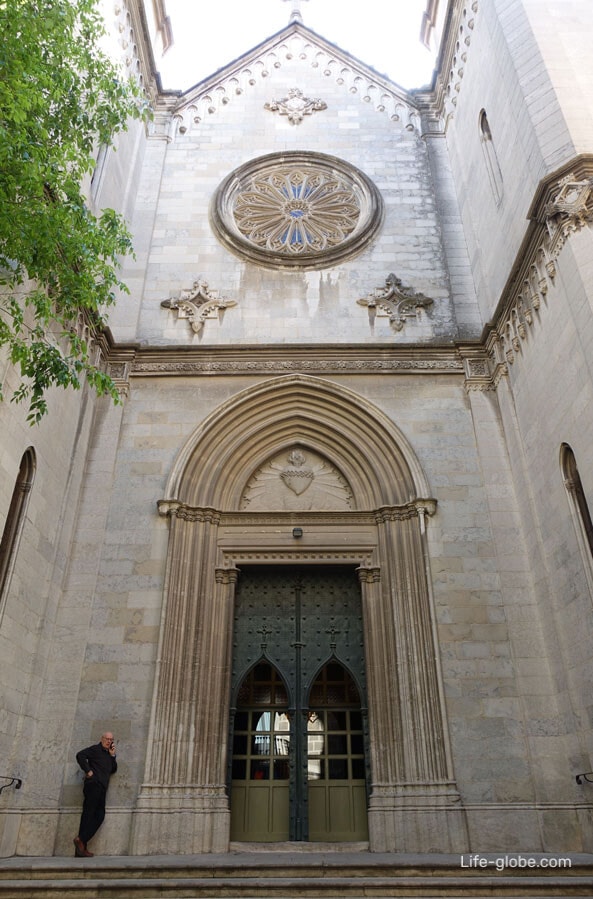
- gardens of Girona's old town, including: Historic gardens (Jardins dels Alemanys), Frances gardens (Jardins de La Francesa) and gardens of Figueres (Figueras Jardins del Doctor).
In the gardens: archaeological sites, places to stay and sculptures. Read more about Girona's old town and its attractions...



The above Girona's attractions can be explored in one day.
Or Plaza de La Independencia (Plaça de la Independència) is one of the main and major areas of Girona.
The square is located on the West Bank of the Onyar river, has a rectangular shape. The perimeter of the square is decorated with a simple neoclassical buildings-twins of the 19th century, with semicircular arches on the first floor.
In the center of the square there is a sculptural composition dedicated to the defenders of Girona 1808-1809.
On the square: cafes and restaurants, places to stay, lights and a sculptural fountain, which is decorated with a sculpture of a boy seated on large turtle. Read more about Independence square in Girona...
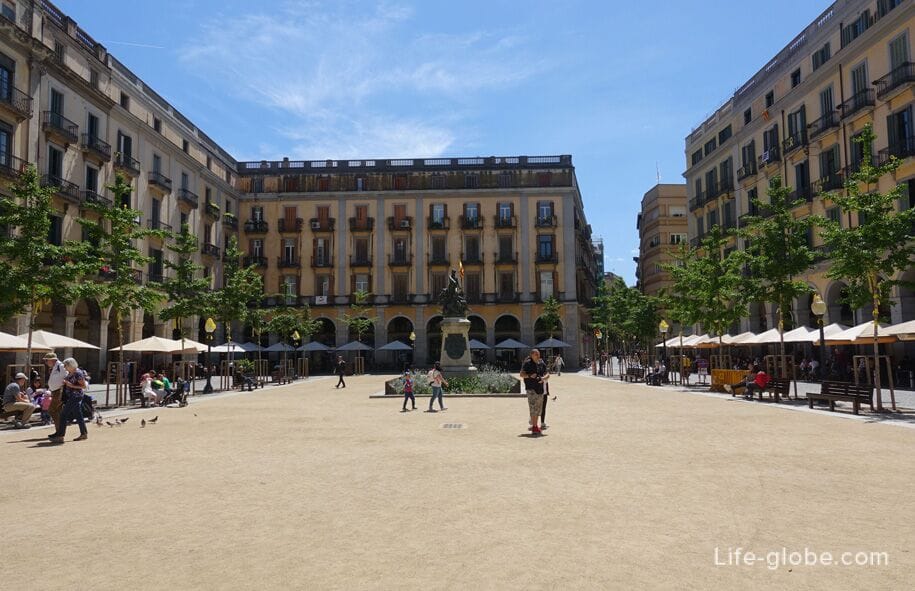
The area of Santa Susanna (Santa Susanna Placa) is located on the West Bank of the Onyar river, near Independence square.
Attractive is the small square the fact that its perimeter are:
- parish of Santa Susanna del Mercadel (Parroquia de Santa Susanna del Mercadal), the 14th and 15th centuries, with the reconstruction of the 20th century;

- the Museum of cinema in Girona (Museu del Cinema), located in the building Agues (Casa de les Aigües).
Founded in 1998, the Museum presents the collection to cinematic works of Thomas Mallala - from the first moving images from shadow theatres to modern cinemas, as well as drawings, graphics and a collection of magazines.
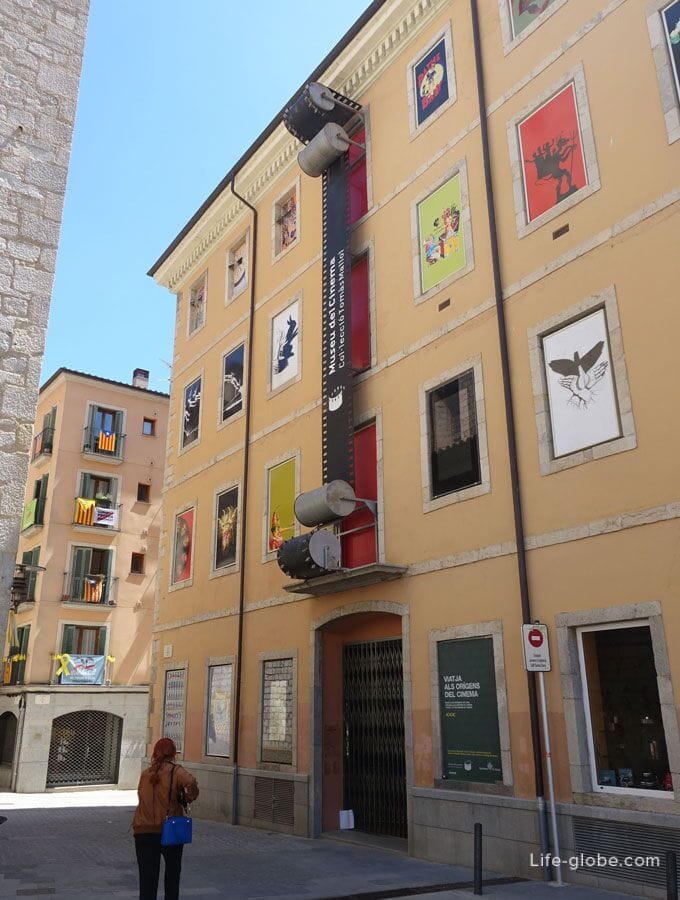
The Parc de La Devesa (Jardins de la Devesa) - gardens - a public Park located in the centre of the new town of Girona.
The Park is a great place for walking and recreation in Spain and the largest Park in Catalonia, with an area up to 40 hectares.
In the Park: platanovaya alley, places for rest and walks, children's playgrounds, picnic area, sculptures and monuments, fountains, flower beds, space for dog run, French garden and city cultural facilities. Read more about the Devesa Park in Girona...
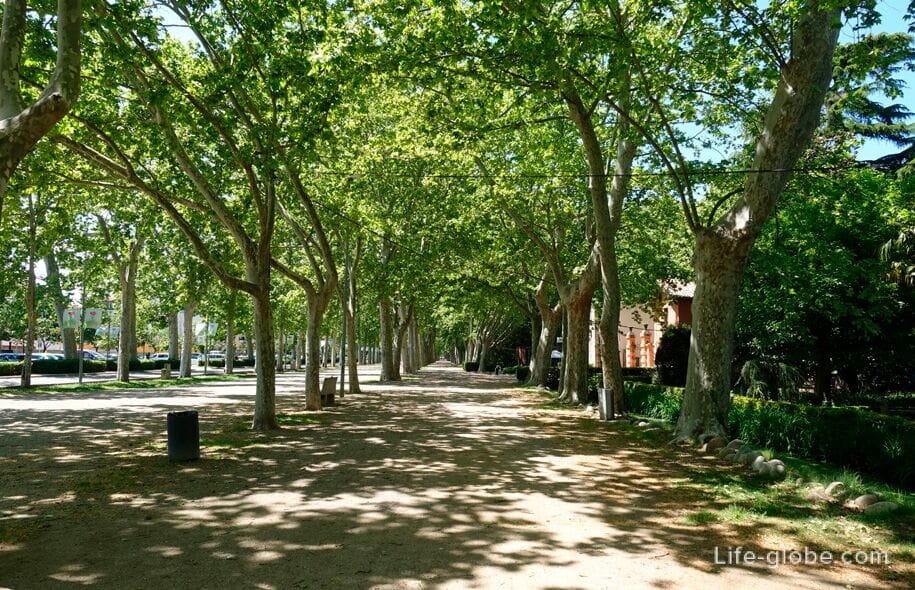
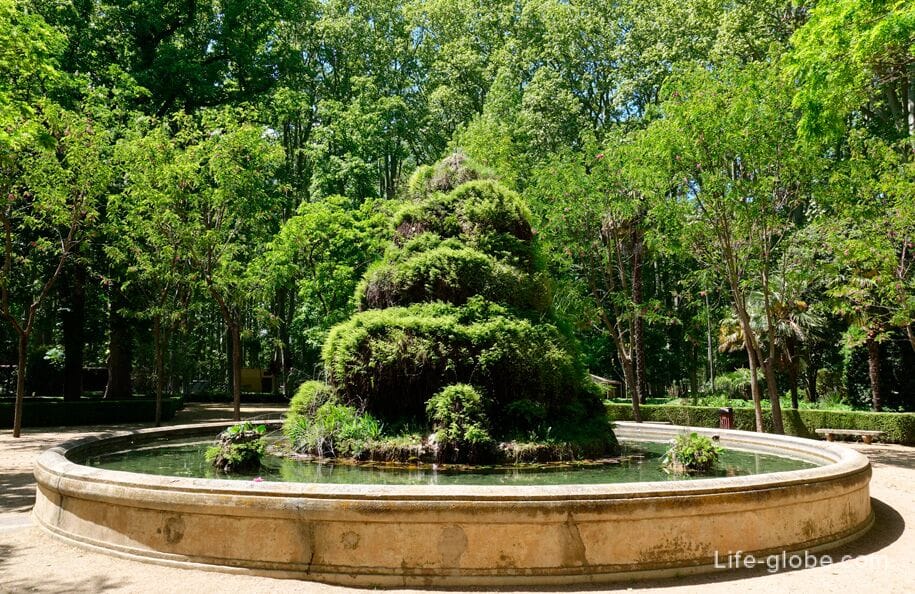
The building of the Correos Building, built between 1916 and 1920 by the architects Eusebi bona and Enrica Kata was opened on 31 March 1922.
Of all of the elements of the structure stands a cylindrical dome and a sculpture of Frederick Marisa located on the main facade.
The building is located at the address: Avinguda de Ramon Folch, 2.

Old hospital of Santa Caterina (Antic Hospital de Santa Caterina) was erected in the second half of the 17th century, to meet the needs of the population.
Initially, the hospital was built in another place in the 13th century and had a chapel of St. Catherine, which gave the name to the hospital, including its larger, more modern building.
In 1654, the decision was made to demolish the original hospital and transfer her to a larger area. In 1666 was laid the first stone of the new building, which eventually became the current. The new complex had a more spacious and varied facilities, as well as a new pharmacy.
The hospital functioned until 2004. Since 2010 the building is the headquarters of the government of Catalonia.
In the building of the old hospital open to the public lobby, the chapel and the pharmacy of Santa Caterina, which is a rectangular room covered with a decorative arch, adorned with allegorical paintings of the 19th century, which in turn cover other previous frescoes, starting with the Baroque period.
The pharmacy is part of the Museum of art Girona and it is possible to visit both separately and in conjunction with the art Museum, which is located near the Cathedral.
The cost of an integrated ticket is € 6.50, concessions € 5.50; only hospital - € 3.50, reduced € 2.50. The first Sunday of each month admission is free.
The old hospital address: Plaça de l'hospital, 1.
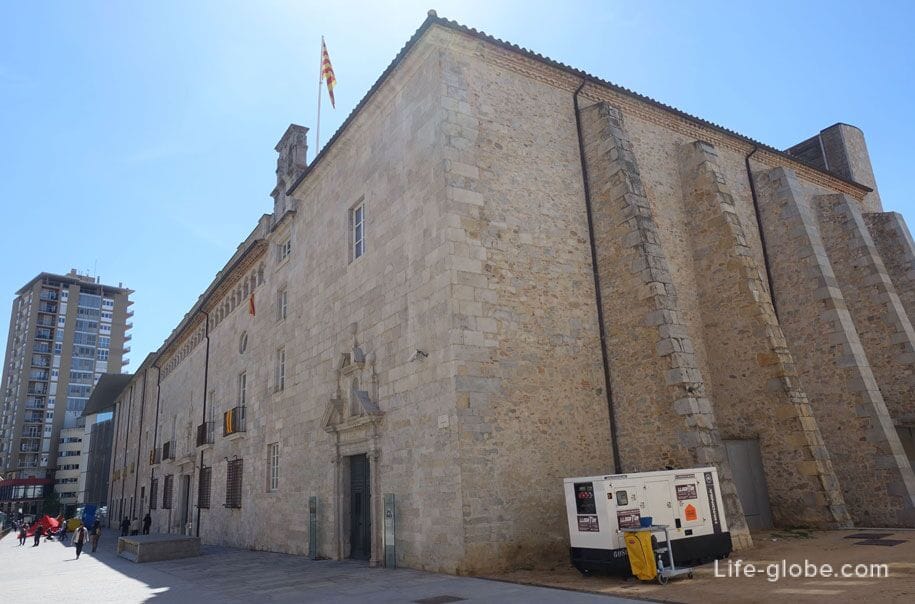

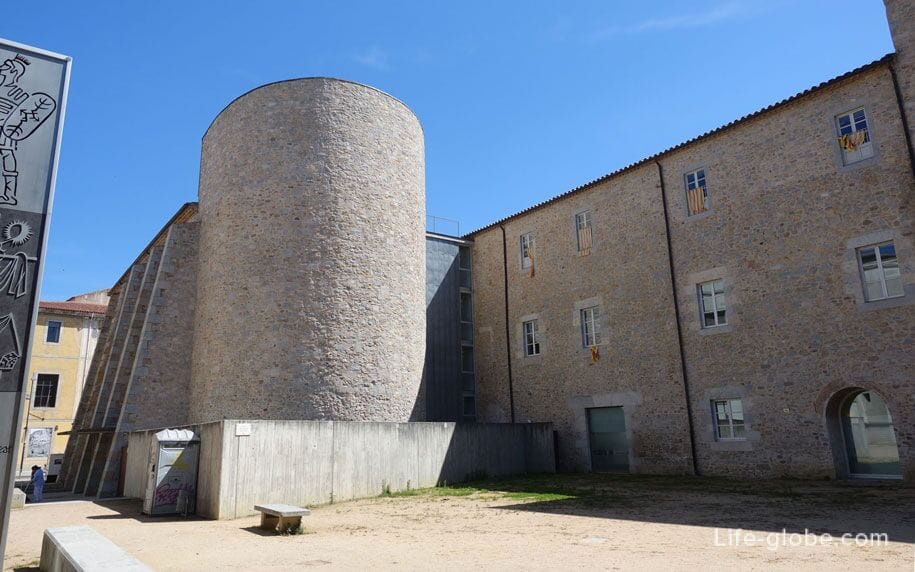
Opposite the old hospital of Santa Caterina, is located the cultural center (Casa de Cultura) where exhibitions, musical events, concerts, seminars, various courses, etc.

Farinera Teixidor was designed by architect Rafael Maso and built in 1911 in the form of a complex consisting of two buildings separated by a walkway, supported by a parabolic arch.
In 1995, restoration work began of the building that ended in 2000.
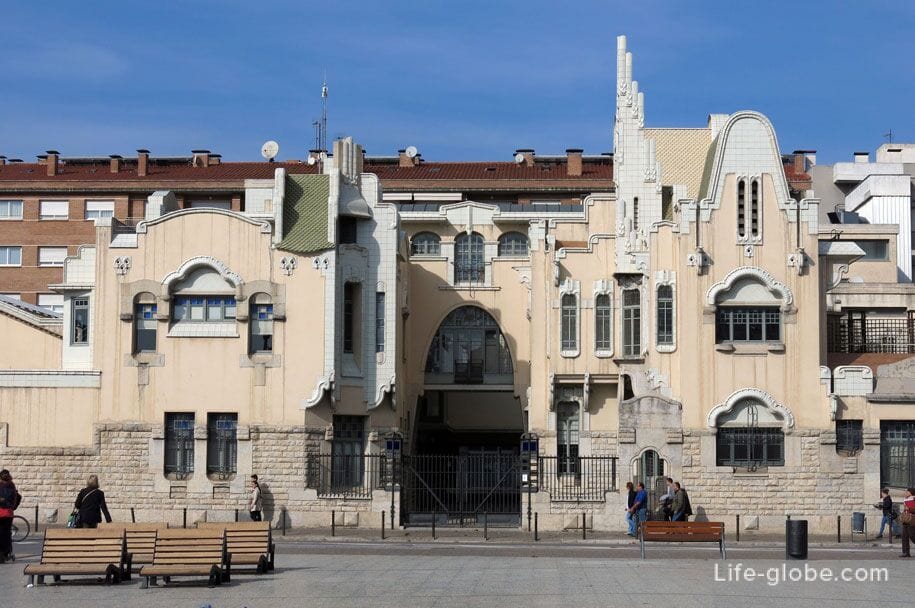
The monastery of St. Daniel (Monestir de Sant Daniel) is a religious complex located outside the old town, to the East of the latter, at Carrer de les Monges, 2.
The monastery was founded in the early 11th century by will of Countess Ermesinde Kargasokskiy who wanted to found a nunnery.
The complex has two floors: the lower of the 13th century with a Romanesque ornaments and the upper, in Gothic style, 15th century.
Among the works of art: tomb of St. Daniel, whose remains, according to tradition, brought from Arles. It dates from 1345, and was executed by the sculptor Aloi de Montbray.
To visit the monastery is possible by pre-booking on the website.
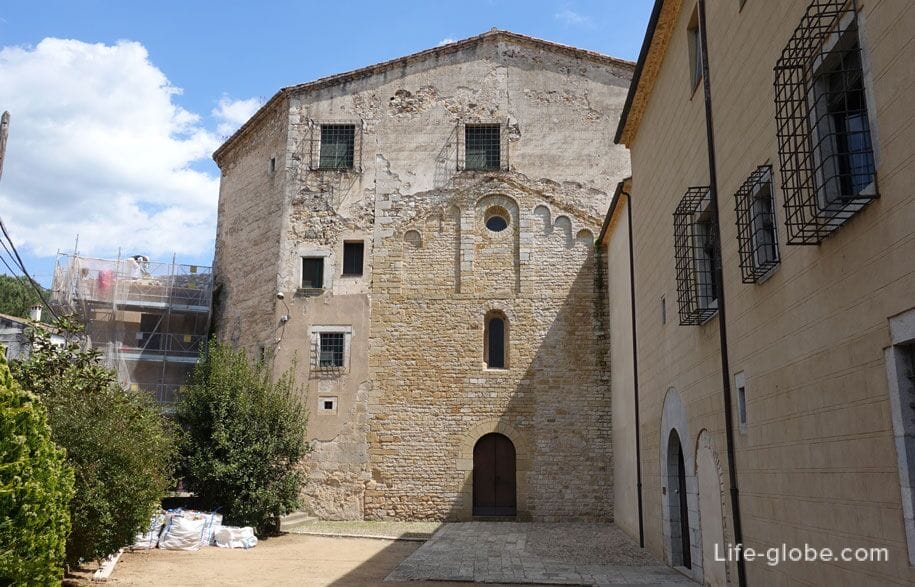
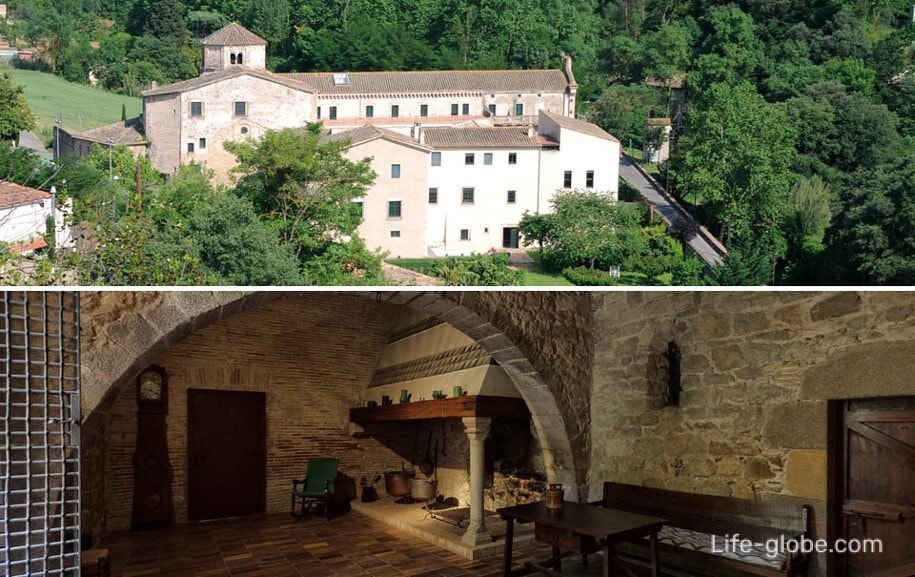
Castell de Montjuic (Castell de Monjuic) was a Bastion, built on a strategic montjuïc by order of Philip IV after the War of the Reapers in 1653 to protect the access to the city from the North.
Bastion perfectly fulfilled its functions in the three sieges of the French war until he was captured and left by 11 June 1811. After Bastion was nearly destroyed.
Now the fortress is a ruin located on a hill, about 1.5 kilometers North from the historic center of Girona. Free access, 24 hours a day.
